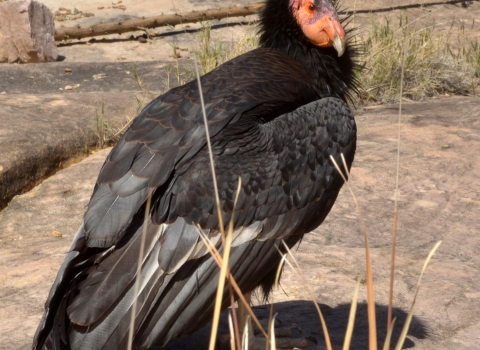DENVER – The National Bison Range in Moiese, Montana, once played a critical role in bringing back the plains bison to the American landscape after populations of this magnificent animal -- America’s national mammal -- were decimated by overhunting. The U.S. Fish and Wildlife Service, which manages the Range as part of the National Wildlife Refuge System, is now assessing the future management of the lands in the context of the current needs of the bison, and accordingly today published a Notice of Intent to prepare a Comprehensive Conservation Plan (CCP) and accompanying Environmental Impact Statement (EIS).f The CCP will outline the resource management goals and visitor recreational activities for the National Bison Range over the next 15 years.
In the late 1800s, the population of bison in the United States had plummeted from a range of 30 million to 60 million individuals to a low of 100 individuals in the wild. In response to the decline in the population, in 1908, Congress enacted legislation that used its power of eminent domain to establish the National Bison Range for the care and management of a herd of bison to help recover the species. From an initial herd of 40, 350-500 bison now call the National Bison Range home. The mission of the National Bison Range is to maintain a representative herd of bison to ensure the preservation of the species, a species whose numbers today surpass 20,000 in the wild. The National Bison Range lies entirely within the boundary of the Flathead Indian Reservation of the Confederated Salish and Kootenai Tribes (CSKT).
By law, the Service is required to develop a CCP for each refuge that outlines specific resource management goals to meet the purpose of that refuge and the mission of the National Wildlife Refuge System as a whole. For the National Bison Range, the Service intends to invite the Confederated Salish & Kootenai Tribes (CSKT) to participate as a cooperating agency in development of the CCP and EIS.
The draft CCP/EIS will include detailed information about the planning process and will outline a range of management alternatives based on public input received over the years. Based on public input received over the years, the Service believes that the range of management alternatives will likely include, at a minimum:
- Alternative A (Current Management): This alternative represents continuing current management and serves as a baseline for comparing the other alternatives. Under this alternative, we would continue our current habitat and visitor services management activities on existing refuge lands. The Service would continue to be responsible for the overall administration of the National Bison Range and the day-to-day on-site activities. The Service would be responsible for implementation of the National Bison Range CCP.
- Alternative B (Preferred Management Option): In this alternative, the Service would evaluate the preferred management option of a Congressional transfer of lands comprising of the National Bison Range unit of the National Wildlife Refuge System to the CSKT of the Flathead Reservation, to be held in trust by the Secretary of the Interior for the benefit of the CSKT. In addition to the management of the herd of bison, the CSKT would conserve the natural resources and provide for public visitation and educational opportunities on such lands. Resources would be managed to perpetuate and protect the natural environment and to preserve cultural and historic resources and values. The alternative returns to the tribe control of their traditional lands and cultural resources.
- Alternative C: The Service would execute and carry out a draft negotiated Annual Funding Agreement (AFA) per the Tribal Self Governance Act, wherein the CSKT would be responsible for implementing the provisions of the AFA.
The Service is opening a 30-day public comment period for the public to comment on the scope of the CCP/EIS. Written comments must be received on or before February, 16, 2017. You may mail or hand-deliver comments to Toni Griffin, Refuge Planner, NBR CCP, 134 Union Boulevard, Lakewood, CO 80228.The mission of the U.S. Fish and Wildlife Service is working with others to conserve, protect, and enhance fish, wildlife, plants, and their habitats for the continuing benefit of the American people. We are both a leader and trusted partner in fish and wildlife conservation, known for our scientific excellence, stewardship of lands and natural resources, dedicated professionals, and commitment to public service.
Connect with our Facebook page at http://www.facebook.com/USFWSMountainPrairie, follow our tweets at http://twitter.com/USFWSMtnPrairie, watch our YouTube Channel at http://www.youtube.com/usfws and download photos from our Flickr page at http://www.flickr.com/photos/usfwsmtnprairie/.



